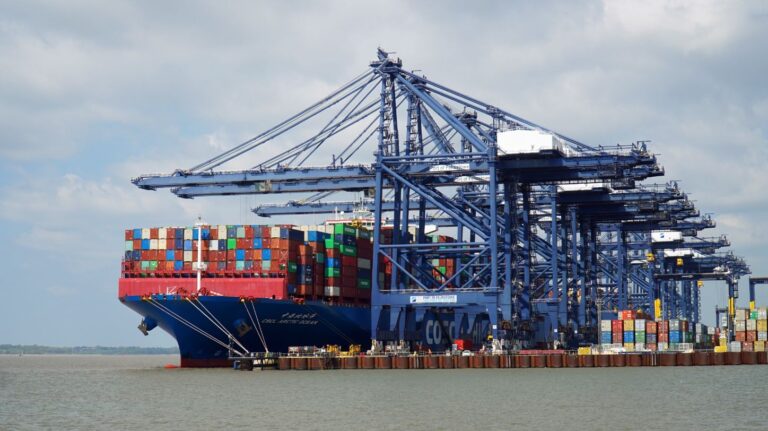Data from supply chain solutions provider FourKites shows a significant increase in shipment volume over the past 12 months at the ports of Felixstowe and Southampton.
At Felixstowe, the 14-day average shipment volume increased by 15% from April to May 2023, and again by 14% from May to June.
Additionally, Southampton has seen a 60% rise in average shipment volume from July 2022 to June 2023.
Glenn Koepke, General Manager of Network Collaboration at FourKites, said: “The spikes and declines seen at Southampton and particularly Felixstowe are driven by the economic environment, as well as a decrease in consumer demand and seasonality.
“During Covid and lasting up until the end of last year, shippers were ordering and shipping high amounts of goods in order to have as much inventory as possible to meet consumer demand.
“This was also to ensure shippers were taking measures to protect their business from the high freight rates, massive delays at ports, and reduced capacity we were seeing at the time.”
Koepke goes on to say that in response to current economic conditions, shippers can be more flexible to react to customer demand, which is why the volumes have been somewhat volatile at Felixstowe and Southampton.
Meanwhile, the average shipment volume at Liverpool and London has been consistent and only changed slightly – down by 30% in Liverpool and up 32% in London from July 2022. Koepke believes that the smaller capacity of these ports compared with Felixstowe and Southampton is the reason that they haven’t seem the same volatility in shipment volume.
He explained: “Liverpool and London ports are consistently pre-booked based on a fixed capacity by shippers and beneficial cargo owners (BCOs) and as such are buffered from unexpected or major changes in order volumes which is why the shipment volumes are consistent.”
The current 7-day average dwell time for imports is between three and five days for all four of the aforementioned UK ports. Felixstowe has the longest dwell time of the four with an average of 4.9 days, followed by Southampton with 4.2, London with 3.7, and Liverpool with 3.3.







